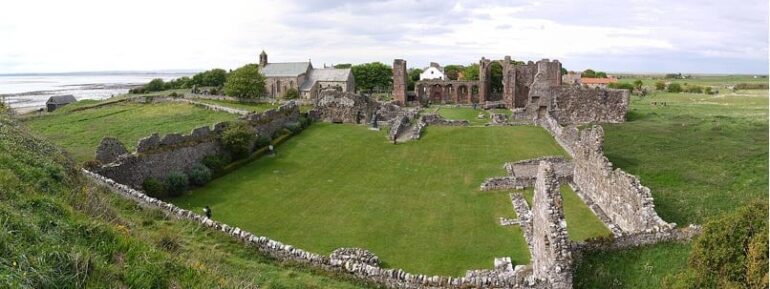🔴 Website 👉 https://u-s-news.com/
Telegram 👉 https://t.me/usnewscom_channel
The Viking raid on Lindisfarne Monastery in 793 marked a significant event in the history of England. Located on the east coast of Northumbria, Lindisfarne, also known as Holy Island, was a crucial center for Christianity, learning, and agriculture. The monastery was founded in the mid-7th century by an Irish monk named Aiden, and it housed the revered Saint Cuthbert’s relics, attracting pilgrims and wealth.
Vikings, originating from regions like Denmark and Norway, were not a distinct people but rather warriors and sailors who embarked on raids. Their incursion into Lindisfarne was one of their earliest and most devastating raids in England. Armed with formidable weapons such as seaxes, axes, and spears, the Vikings utilized shock tactics, landing swiftly and attacking immediately.
The Anglo-Saxon Chronicles and other scant historical records describe the terror that the raid brought upon the monks and the local population. Monks were killed, others taken as slaves, and the monastery was looted of its treasures. The raiders employed psychological warfare, exploiting the fear of their sudden appearance, often shrouded in the North Sea fog, enhancing their reputation for brutality.
The attack on Lindisfarne was not an isolated event. Previous incidents in Wessex and Mercia had hinted at the Vikings’ presence, but the Lindisfarne raid had a profound impact on the Christian world in Britain. The Vikings meticulously planned their raids, understanding the tides and the geographical features of their targets, ensuring maximum impact and plunder.
Despite the destruction, the monastery was eventually rebuilt, and Lindisfarne continued to play a significant role in the region until its closure during Henry VIII’s dissolution of the monasteries in 1536.
Top image: Ruins of Lindisfarne monastery. Source: Christopher Down/CC BY 4.0

